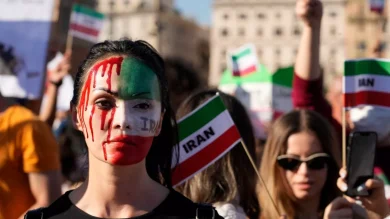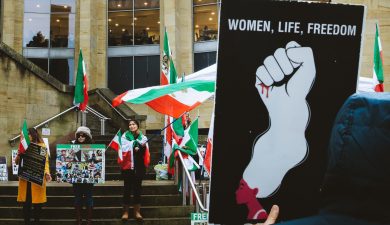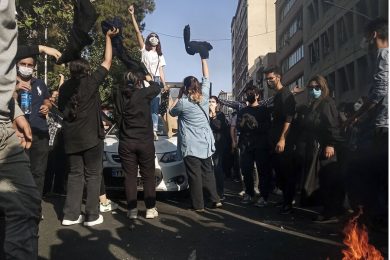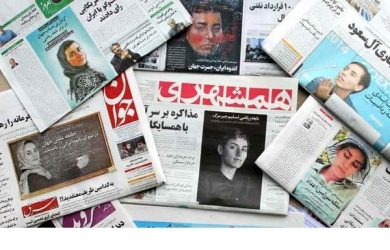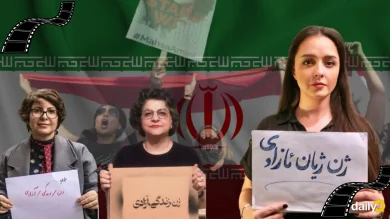In the heart of every revolution lies a vision of hope. In Iran, that vision is being crafted daily by the courage of women who have refused to live in fear. From the streets of Tehran to the digital spaces connecting Iran to the world, women are leading the resistance against the Islamic Republic’s oppression, particularly the brutality of the IRGC (Islamic Revolutionary Guard Corps).
The slogan “Women, Life, Freedom” is no longer just a chant; it’s the blueprint for a new Iran — one without fear, without inequality, and without dictatorship. This article offers a vision of a future Iran where women lead with justice, dignity, and strength, and where the darkness of repression has given way to the light of freedom.
1. The Roots of Fear: Why the IRGC Targets Women
A. Institutionalized Gender Oppression
Since the 1979 Islamic Revolution, Iranian women have lived under a system of legal and cultural discrimination, enforced violently by the IRGC and its affiliated organizations.
• Mandatory hijab laws restrict bodily autonomy.
• Gender segregation limits social and economic opportunities.
• State surveillance and morality police impose constant fear in daily life.
Women’s very existence outside of these restrictions is seen as an act of rebellion — and that is why the regime fears them.
B. Women as Symbols of Resistance
Women challenge the ideological foundation of the Islamic Republic:
• Their demand for equality undermines the regime’s patriarchal authority.
• Their refusal to be silent reveals the regime’s illegitimacy.
• Their resistance inspires men, minorities, and younger generations to rise up too.
In essence, the freedom of Iranian women represents the freedom of the entire nation.
2. How Women Are Leading the Fight Today
A. Protests and Civil Disobedience
From Mahsa Amini’s death to the “Girls of Revolution Street”, women have led public protests:
• Removing hijabs in public spaces.
• Protesting gender apartheid in universities and workplaces.
• Organizing underground networks to support families of political prisoners.
Even in the face of violent crackdowns, women have turned everyday acts into weapons of resistance.
B. Digital Resistance and Citizen Journalism
When traditional media is silenced, women use digital platforms:
• Reporting police violence during protests via encrypted apps.
• Sharing personal stories of torture and imprisonment.
• Leading global campaigns like #WomenLifeFreedom, ensuring the world watches.
Despite internet shutdowns and cyberattacks, Iranian women have built an unstoppable digital movement.
C. International Advocacy
Iranian women in the diaspora amplify internal struggles:
• Lobbying foreign governments to recognize human rights abuses.
• Launching global awareness campaigns to pressure international organizations.
• Connecting activists across borders to maintain momentum.
Women like Masih Alinejad and Shirin Ebadi show how international advocacy keeps Iran’s movement alive globally.
3. A Vision of a Free Iran Led by Women
Imagine an Iran where:
• Women can choose their dress, careers, and life paths freely.
• Minority rights are respected, and gender equality is enshrined in law.
• No fear of arrest for dancing, singing, or speaking the truth.
• Political prisoners are free, and the prison cells of Evin are empty.
• Art, journalism, and free thought flourish without censorship.
• Democratic institutions replace the brutality of the IRGC.
This is not a dream. It is the future Iranian women are fighting for — and it is closer than ever before.
4. Why Women’s Leadership Matters for Iran’s Democracy
A. Building Inclusive Movements
Women have consistently:
• United ethnic minorities, labor movements, and students under a single banner of freedom.
• Demanded equality not just for themselves, but for everyone marginalized under the Islamic Republic.
A future built by women ensures a more just, inclusive society.
B. Prioritizing Human Rights and Justice
Women-led movements emphasize:
• Ending executions and torture.
• Reforming the judiciary to serve the people, not punish dissent.
• Ensuring accountability for past abuses through truth and reconciliation processes.
In contrast to authoritarian regimes rooted in power and fear, women’s leadership fosters societies based on compassion, equality, and peace.
C. Redefining Strength
The Iranian regime defines strength through military power and violence.
Iranian women redefine strength as:
• Courage to speak truth to power.
• Empathy for victims of oppression.
• Unbreakable hope in the face of brutality.
This shift is essential to building a democratic, peaceful Iran.
5. Obstacles on the Road to Freedom
The path is not easy:
• The IRGC’s violent crackdowns continue.
• Mass arrests, including of women journalists and students, aim to silence dissent.
• Internet censorship and foreign disinformation campaigns attempt to distort the narrative.
But the courage of Iranian women has already changed the rules. Fear is breaking down. The regime’s control is weakening.
6. How the World Can Support a Future Without Fear
A. Recognize and Amplify Iranian Women’s Struggles
• Share their stories.
• Support independent Iranian journalists.
• Defend women’s rights activists under threat.
B. Pressure Governments and Institutions
• Demand that the IRGC be designated a terrorist organization worldwide.
• Support sanctions against individuals responsible for human rights abuses.
• Call for the release of political prisoners, especially women activists.
C. Support Safe Communication Tools
• Promote access to VPNs and encrypted apps in Iran.
• Support cybersecurity initiatives to protect activists from surveillance.
Conclusion: A New Dawn Is Rising
The future of Iran will not be defined by fear, oppression, or violence. It will be shaped by the bravery, vision, and leadership of its women.
Join Our Newsletter!
Stay informed with the latest updates, news, and ways to take action in the fight for justice and global security. Sign up now to get updates delivered straight to your inbox!

